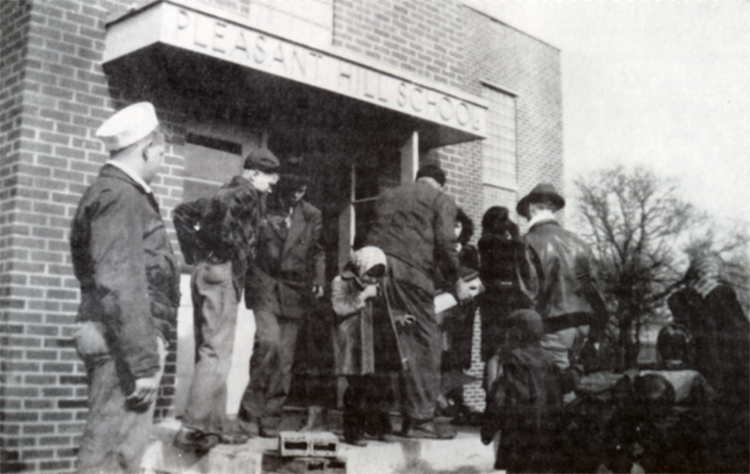
The school the townspeople built was gone, again leaving the district that had fought so hard for its education school less. Lower Agency School District was in the same fix. There was nowhere for the two districts to turn, so the old frame schoolhouse, retired in 1892 but recalled twice before for school use, was put back to service.
Before school could resume, however, the chapel had to be remodeled and new supplies had to be purchased. There was no school for the students in grades kindergarten to seven. The people felt that if the eighth grade students missed too much school they would not be allowed to enter high school the next year. So, for the next four weeks, Lola Mahaffey taught about six eighth graders in her home. The students were transported by car. During this time, Ruth Foster was in charge of ordering new supplies and text books for when school would resume.
The chapel was remodeled so there were two rooms. A wall was built down the middle of the building. Each classroom measured 8 or 10 feet wide by 22 feet long. The school was required to have fire escapes so ladders were built outside the chapel's windows.
The remodeling was finished and school resumed on December 13, 1943. The classrooms were crowded but education persisted. The chapel was used as a schoolhouse the rest of the 1943-44 school year, all of the next year, and most of the 1945-46 school year.
With high taxes, 40 to 50 students, and no school, the Pleasant Hill school board met with Lower Agency's school board, and the two decided to consolidate into one district and build a new school. The two districts consolidated early in 1944. The people approved of building a new school. It was decided to move the site of the school. The old site did not cover very much land and there was not enough playground room.
The new fire-proof school was built during the years 1945 to 1946. A ceremony was held for the laying of the school's corner stone in 1945. Lawernce Anderson, the son of Art and Mini Anderson, was home on leave from the Navy. He, along with schoolboard members Joe Pierick, Hommer Blackford, and Ira Ellis and school secretary Vic Peterson, laid the stone. It was not until the spring of 1946 when the school was ready for use. In a community effort of adults and school children, supplies, books, and equipment were carried from the temporary school to the new building.